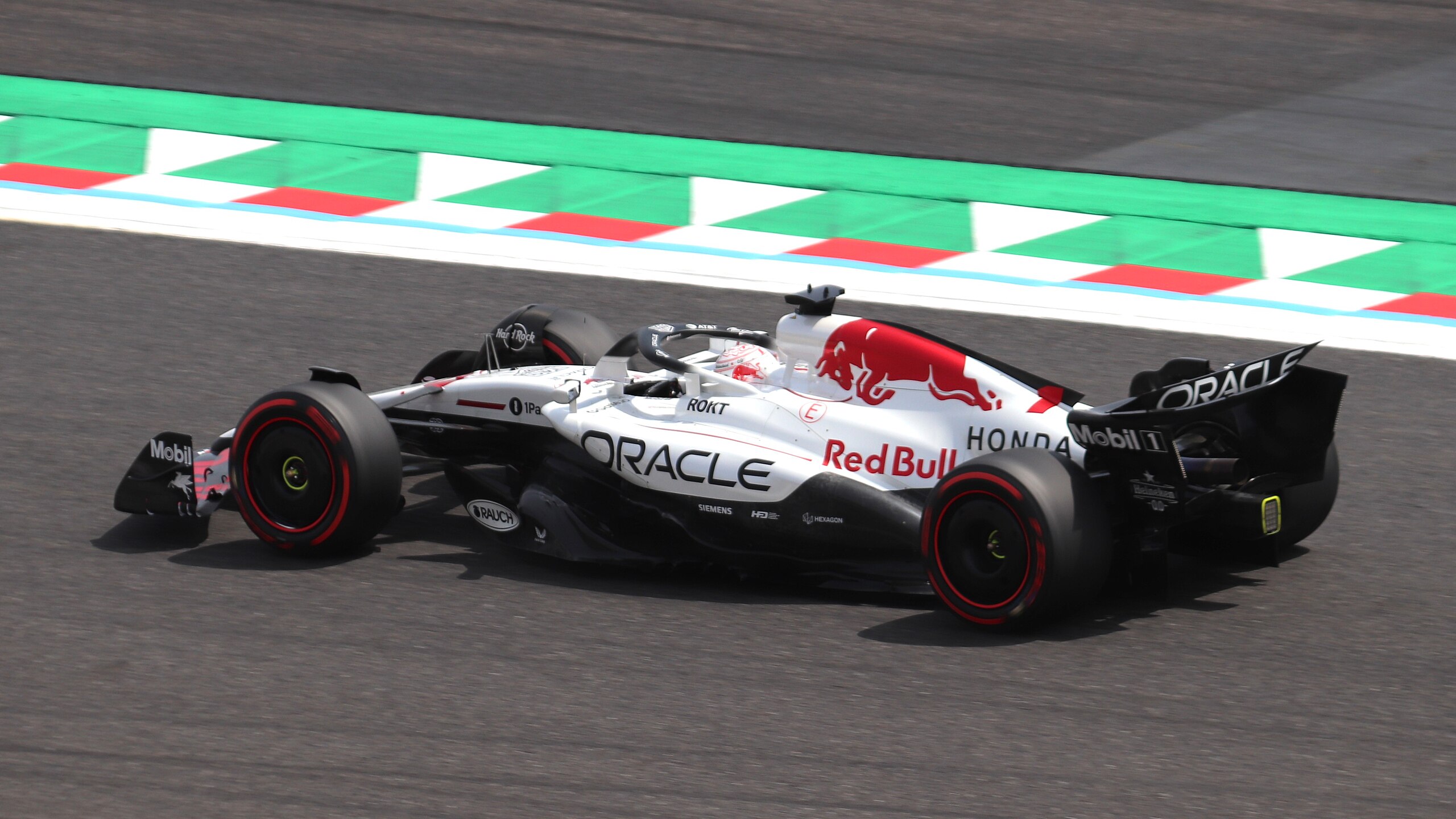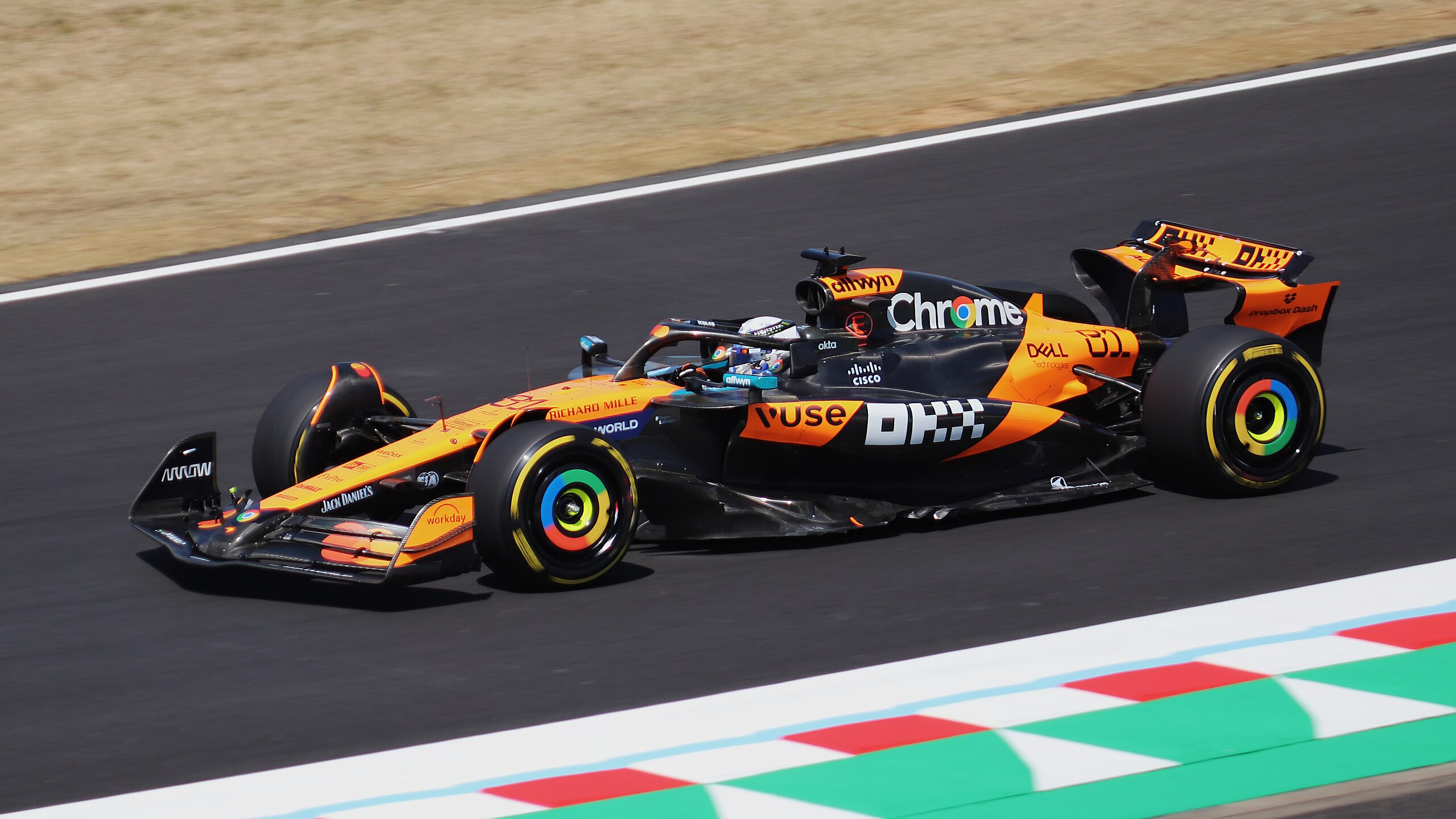Are you willing to sponsor?
Are you ready to explore the transformative power of athlete sponsorship for your brand? Click here to learn more about how sponsorship can help brands grow and thrive in the exciting world of motorsports.
By Finnegan Driscoll| Posted October 31, 2022 | In Formula 1, Formula1, MotoGP
With global warming becoming a more serious issue by the day, it has become a moral obligation for us as people to make an effort to help offset the damage being done to our planet. Motorsport is no different, with the respective sports finding their own ways to help. In recent years motorsports have taken big steps towards making their sport more sustainable, with measures including a shift away from harmful fossil fuels.
The surge in popularity of Formula E demonstrates a new era for motorsport, as this eco-friendly alternative to Formula 1 has given us an insight into the future through its use of cutting-edge technology. Also, one could suggest its success was a contributing factor in Formula 1 pledging it will be net-zero carbon by 2030. Efforts to make motorsports greener can also be seen in MotoGP, as officials have begun to look into the possibility of using less environmentally damaging fuel.
Whilst there is still some way to go before we can brag about all motorsports being completely green, it is encouraging to see that they are on the right path. It is also interesting to see how they can make motorsport more eco-friendly without compromising the excitement of races. Technical teams will be relishing this challenge, as their work will be vital in the race to save the planet.

With the global warming issue becoming critical in recent years, in November 2019 Formula 1 announced a sustainability plan to help achieve a net-zero carbon footprint by 2030. This announcement was accompanied by the figures from a deep-dive analysis into their carbon footprint. F1’s 2019 carbon emissions were estimated to be 256,511 tons.
These figures have led skeptics to question how realistic the net-zero carbon target really is. When you consider the sport consists of 20 cars burning up to 110kg of fuel every other week, this skepticism may be justified. However, one cannot help but be impressed by F1’s attempts so far to slash carbon emissions as they look to set an example for other sports. F1 was built upon the technologies that have begun destroying our planet, so if it can pivot into an eco-friendly future, what’s the excuse for other sports?
Perhaps surprisingly, the biggest contributor to F1’s 256,511-ton carbon footprint is logistics, accounting for 45% of that figure. Logistics includes the transporting of equipment between different racetracks, commonly via air, sea, and road transport. The next biggest contributor to F1’s footprint is the transport of personnel to the races, which includes the teams, partners, and fans. Cutting down on the figures for logistics isn’t easy, and so F1 are looking to offset the carbon emitted by transport by contributing to carbon-catching initiatives like tree-planting. On the other hand, the COVID-19 crisis brought forward plans for some event-day operations to be conducted remotely. This reduces the amount of personnel traveling to races.
Another surprising statistic revealed by the report was how small the cars’ contribution was (in comparison with logistics). In one season, the 20 cars burn as much fuel as a single, 4-engined Boeing 747 does on a ten-hour flight! Nonetheless, F1 officials recognize the opportunity they have to set an example through the use of more sustainable fuel. Ross Brawn said ‘It would be rewarding for F1 to demonstrate the technology we can take forward to contribute to the reduction of greenhouse gases.’
F1 cars currently run a blended fuel that is 10% sustainable. Following intensive research, it is hoped that in 3 years’ time the fuel used will be 100% sustainable. The work being done to find the most sustainable fuel possible demonstrates how serious F1 is about their net-zero carbon target. Significantly, Brawn also claims that once they’ve found the solution for a 100% sustainable fuel, it will be available to road cars. This highlights the sport’s willingness to help in the fight for our planet.
FIM president Jorge Viegas said, ‘We want to really show all the motorcycle manufacturers that it’s possible to have the fun we all like but with sustainable fuels.’ This came as MotoGP announced their plans to use 100% sustainable fuel in their motorcycles by 2027. Since then, MotoGP has engaged in various initiatives to help reduce their carbon footprint and raise awareness for climate change. Most importantly, they have also invested time and money into the research and development of more sustainable fuel for motorcycles.
MotoGP events are becoming greener as officials have looked for ways to bring down the amount of waste produced during a race weekend. For instance, the number of tires produced for each race will be reduced, in turn preventing around 1500 tires from going unused. This means fewer units have to be manufactured and transported—in turn cutting down on the carbon emitted by logistics. On top of this, racetracks used in MotoGP (and in some cases, shared with Formula 1) have placed sustainability at the top of their agendas. This can be seen as venues like Silverstone and Catalunya have taken measures like ensuring the energy used at events is 100% renewable, and some have installed electric charging stations, encouraging the use of electric cars.
Already a more sustainable form of personal transportation than cars, motorcycles can help drive us into a more eco-friendly future. MotoGP is helping in this race by using their platform to develop and test ‘sustainable non-fossil drop-in fuels.’ Produced using renewable energy, these fuels will be developed from waste materials, offering an eco-friendly alternative to fossil fuels. As a part of this initiative, by 2024 MotoGP fuel will become 40% non-fossil origin, and by 2027 they are targeting completely non-fossil origin fuel. Similar to F1, MotoGP has pledged to work with manufacturers to help make this sustainable fuel available to use in a standard combustion engine. This highlights that MotoGP is using its platform for innovation and that the sport is genuinely fighting in the battle to make the world greener.
Motorsports being built upon the use of fossil fuels led to them being put under intense scrutiny as the issue of climate change grew. However, the way sports like MotoGP and Formula 1 have adapted to become more sustainable is applaudable. Not only are they making their sports more sustainable, but they are also developing fuels that will help massively reduce carbon emissions if they can be used in road vehicles. The path is still long, but it is good to see that our sports are using their platforms positively to drive change forward and fight against climate change.
Are you ready to explore the transformative power of athlete sponsorship for your brand? Click here to learn more about how sponsorship can help brands grow and thrive in the exciting world of motorsports.
The online platform where you can discover the latest trends, strategies and insights from the exciting world of sports marketing.
View our blog
July 4, 2025
When, in 1950, the Formula 1 kicked off at Silverstone, no one could have predicted that, 75 years later, it would become much more than a sport. Today, F1 is a global phenomenon, a cultural,[...]
Read More
July 1, 2025
In the complex and exciting world of Formula 1, performance no longer belongs exclusively to wind tunnels and race strategies. It also unfolds in boardrooms, brand labs, and experiential mark[...]
Read More
June 26, 2025
This content is password protected. To view it please enter your password below: Password: [...]
Read MoreIn an era where it is possible to get anywhere with a click, there is a strong temptation to approach teams and properties directly for sponsorship projects.
By doing so, we are convinced that we are shortening the value chain, saving time and money. However, these DYI methods are anything but risk-free and what initially appears to be a competitive advantage soon turns into a problem that is difficult to resolve. That’s why there are agencies. And this is why you should rely on us for your sponsorships.
When first approaching a sponsorship or sports marketing project, it is difficult to know immediately which stakeholders are correct, what the decision flow is, and what the right timelines are for each process. Sports is a very specialized field of action, and fitting effectively into its paths can take a lot of time and therefore money. We, on the other hand, know referents and spheres of action and know who to talk to, when and how. So you are also more effective.
Sports is an immense passion, and for our heart colors we would be willing to do anything. But business is a different business, and it is important to make the best possible strategic decisions based on independent research, statistics and reliable data. A sports marketing and sports sponsorship agency like RTR has an objective, 360-degree picture of the scenario and can tell you what is really best for you: which sport, which athlete, which team. This is because we possess a great deal of data and information on ratings, segmentation and attitudes. Because the numbers don’t lie. Never.
Activations are the real heart of sports sponsorship. Without them, there remains only a blank sticker on a motorcycle, car or uniform and no contact with the public, no emotional connection, no impact on the bottom line. Then how do you do it? It certainly won’t be the teams or the athletes who will help you leverage sponsorship and enjoy the many marketing rights you have paid for. To bring out the best in a sports marketing project you need an agency that knows how to use sponsorship to engage the fanbase on the Web, to reach out to Shopping Centers, to organize hospitality, to develop B2B and B2C opportunities, and to get “your” athletes in front of millions of potential consumers.
Would you ever go to the dealer who sold you the car and ask if the competitor’s car is better? No, of course. So, how do you expect to get firm measurements of the effectiveness of your sponsorship if you do not rely on someone super partes? At RTR, we have always worked with independent third-party agencies that allow us to know the return on any exposure of your brand on TV and in the media. In addition, we believe in calculating ROI as the ultimate measure of your success-so we can tell you for every penny you spend how much you are making.
We have been involved in sports sponsorship and sports marketing for more than 15 years. We are consultants in the sense that our goal is to maximize your investment, but we are also an agency that manages the project from start to finish. We have been doing this since 1995 with passion and professionalism, following three principles that have become cornerstones of our business: independence, verticality and transparency.
I would like to highlight the fact that one of the qualities of RTR is its great ability to approach the sponsorship scenario strategically, together with its passionate attitude, its amazing enthusiasm for solving problems, and its high level of professionalism.
Gianluca Degliesposti
Executive Director Server&Storage EMEA
Eurosport is truly delighted with its business relationship with Riccardo Tafà, who has become extremely popular, thanks to his detailed knowledge of the sports marketing sector and his highly diligent attitude to work.
Francois Ribeiro
Commercial Director
Passion and Expertise are the features that I have found in RTR since the very beginning. Serious and reliable professionals but also very helpful, nice and open-mind people, willing to listen and compare different ideas. All the values in which RTR believes make this agency a partner, not just a supplier, a partner with whom we have had the opportunity to achieve significant commercial results in term of success and image.
Luca Pacitto
Head of Communication
We have been working with RTR Sports Marketing for over 10 years. The objectives and the programmes of collaboration continue to be renewed and to grow with mutual satisfaction. I believe RTR is a team of great professionals led by Riccardo Tafà, who I consider a manager of exceptional skills and with a great passion for his work.
Lucio Cecchinello
Team Principal
I have known and worked with Riccardo Tafà since 1995 when we collaborated for the first time on a project for the Williams Formula 1 team. Several clients followed. After leaving Williams to work for Gerhard Berger then owner of the Toro Rosso F1 Team, I turned again to Riccardo to seek his help in finding a tool supplier for the team and Riccardo duly obliged with an introduction to USAG, a partnership with Toro Rosso which endured for five years. I recently started a new role as Group Commercial Director for the renowned Andretti Autosport organisation and I find myself working with Riccardo once again on a number of interesting projects. Why has this relationship with Riccardo endured ? He’s smart, knows the commercial side of sport inside out and back to front and he’s honest and trustworthy. Riccardo Tafà is a “doer” not a “talker”: in over 20 years I have never had a dispute either with him or with a company that he has introduced and each partnership introduced by Riccardo has delivered quantifiable ROI to rights holder and sponsor alike. I can think of no better testimonial of Riccardo’s diligence, knowledge, contact base and hard work than that.
Jim Wright
Group Commercial Director
The online platform where you can discover the latest trends, strategies and insights from the exciting world of sports marketing.
View our blog
July 4, 2025
When, in 1950, the Formula 1 kicked off at Silverstone, no one could have predicted that, 75 years later, it would become much more than a sport. Today, F1 is a global phenomenon, a cultural,[...]
Read More
July 1, 2025
In the complex and exciting world of Formula 1, performance no longer belongs exclusively to wind tunnels and race strategies. It also unfolds in boardrooms, brand labs, and experiential mark[...]
Read More
June 26, 2025
The European Commission has provided Liberty Media Corporation with unconditional approval to complete the acquisition of the MotoGP World Championship. The process of annexing the top motorc[...]
Read More